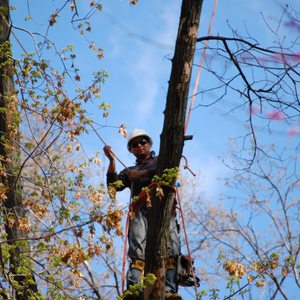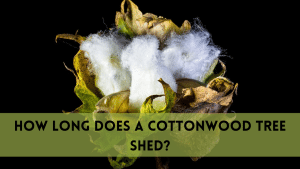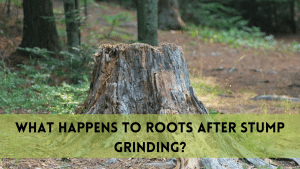Palm trees add a touch of tropical elegance to any outdoor space in the world of landscaping and gardening. Notwithstanding, there comes a time when you really want to express farewell to your palm tree, whether it’s because of sickness, storm harm, or just in light of the fact that it has grown out of its joy. While chopping down the actual tree could seem like the hardest part, managing the obstinate palm tree stump left behind can similarly challenge.
In this extensive aid, we will make you through the stride-by-step cycle to remove a palm tree stump by hand way. From wellbeing safeguards to the necessary devices and strategies, you’ll learn all that you really want to effectively handle this errand. You’ll have all the tools you need to turn that stubborn stump into a blank canvas for your landscaping plans by the time this guide is finished.
Safety Precautions
Safety should always come first before you attempt to manually remove a palm tree stump. Working with apparatuses and tree stumps can present possible risks, so playing it safe is fundamental to guarantee your prosperity in the interim.
Fundamental Wellbeing Stuff
Defensive Eyewear: Continuously wear wellbeing goggles or defensive glasses to protect your eyes from flying flotsam and jetsam, wood chips, or soil particles.
Gloves: Put resources into a solid sets of gloves to safeguard your hands from rankles, splinters, and any sharp items you could experience while working.
Fitting Footwear: Wear shut toe shoes or boots with non-slip bottoms to give solidness and safeguard your feet from unplanned wounds.
Long Sleeves and Jeans: To reduce the likelihood of getting cuts, scratches, or coming into contact with irritants like tree sap, wear clothing that covers your arms and legs.
Dust Cover: In the event that you’re working in dusty circumstances, consider wearing a residue cover to safeguard your respiratory framework.
Risk Appraisal
Examine the Stump: Before you begin working, cautiously inspect the stump. Search for any indications of rot, flimsiness, or secret perils, for example, nails or wires implanted in the wood.
Recognize Close by Impediments: While removing the stump, be aware of any nearby structures, fences, or other obstacles that could impede your progress.
Clear the Workspace: During the removal, get rid of any rocks, debris, or other items that could get in the way or cause accidents.
Alert During the Evacuation Cycle
Stump Development: Practice alert while endeavoring to relax or lift the stump, as it might move startlingly, particularly on the off chance that it’s to some degree spoiled.
Sharp Devices: When using cutting tools like a chainsaw or handsaw, pay close attention. Get them far from your body and guarantee they are in great working condition.
Roots and Soil: While digging around the stump and cutting off roots, look out for moving soil and falling trash.
Stability: Keep a steady position while applying power to instruments or while utilizing influence to lift the stump. Keep away from overexertion, and enjoy reprieves on a case by case basis.
Teamwork: On the off chance that the stump is especially huge or difficult, think about enrolling the assistance of a companion or relative to guarantee security and productivity.
Tools and Materials
You’ll need the right tools and materials to successfully remove a palm tree stump by hand. Gathering these basics before you start will make the cycle smoother and more effective.
Here is a rundown of the fundamental devices expected for the gig:
- Scoop
- Pickaxe or Mattock
- Security Goggles and Gloves
- Rope or Chain
- Discretionary Devices
Step-by-Step Guide to Remove a Palm Tree Stump by Hand
It may take some physical effort to remove a palm tree stump by hand, but with the right methods, it can be done. Adhere to these bit by bit directions to eliminate the stump from your nursery effectively:
Step 1: Survey the Stump
Before you plunge into the evacuation cycle, carve out opportunity to survey the palm tree stump:
Size and Condition: Determine the stump’s overall condition and size. Is it newly cut, or has it been sitting for some time? This appraisal will assist you with arranging your methodology.
System of Roots: Find out about the root foundation’s degree by analyzing the uncovered roots and assessing how far they reach out past the stump.
Step 2: Prepare the Workplace It is essential to establish a secure and well-organized work environment:
Clear the Region: Around the stump, remove any rocks, debris, or other items that could impede your work or pose a risk to your safety.
Lay out a Protected Zone: Set up a reasonable edge around the workspace to guarantee the security of yourself and any other individual close by.
Step 3: Cut the Stump
Utilizing a saw or trimming tool, cut the palm tree stump as near the ground as could really be expected:
Security Stuff: Before beginning any cutting work, make sure you are wearing gloves and safety goggles.
At ground level, cut: Make an even sliced as near the ground as conceivable to limit the level of the leftover stump.
Wellbeing First: Practice alert while utilizing the saw, getting it far from your body and observing the producer’s security rules.
Step 4: Now is the time to dig around the stump to reveal the roots:
Begin Digging: Dig a trench around the stump with the shovel and gradually work your way toward the roots.
Uncover Roots: Keep digging until you uncover a critical piece of the roots. This will make root removal and cutting simpler.
Step 5: Cut off the Roots
Cutting and eliminating the roots is a basic piece of the cycle:
Pick the Right Instrument: Contingent upon the size of the roots, utilize either the saw or trimming tool to slice through them. Begin with more modest roots and move gradually up to bigger ones.
Severance Method: Position yourself securely and cut the roots each in turn. Be patient, as certain roots might be profoundly inserted.
Step 6: Release and Lift the Stump
To make the stump expulsion more straightforward, you’ll have to slacken it from the dirt:
Use Influence: Fold a rope or chain over the stump and make influence by pulling or lifting it somewhat. This releases the stump from the dirt.
Rock the Stump: To make the stump even looser, rock it back and forth. Be wary while doing this, as the stump may out of nowhere give way.
Step 7: Eliminate the Stump
With the stump released, now is the right time to eliminate it from the opening:
Lift Progressively: Use the rope or chain as usual to gradually lift the stump out of the hole. Enroll the assistance of a companion if essential.
Arrange or Reuse: After it has been removed, you should decide whether to throw the stump away or use it for creative landscaping ideas.
Step 8: Fill the Opening
At last, fill the opening left by the eliminated stump:
Select Fill Material: Pick reasonable soil or fill material to even out the ground where the stump used to be.
Pack Down: Utilize the rear of a digging tool or an alter to reduced the fill material and make a level surface.
You can successfully remove a palm tree stump by hand if you follow these steps. Particularly when dealing with larger or more seasoned stumps, persistence and patience are essential. We will provide additional hints and techniques to make the procedure even easier in the following section.
Tips and Tricks
A DIY project that can be challenging but rewarding is manually removing a palm tree stump. To make the interaction significantly more effective and sensible, think about these tips and deceives:
Extra Instruments for Accommodation
Root Saw: On the off chance that you experience restricted spaces or difficult to-arrive at roots, a root saw with a tight sharp edge can be unbelievably useful.
Sledgehammer: Using a sledgehammer to drive wedges into the wood will make it easier to break apart when you are having trouble splitting the stump or roots.
Grinder for Stump: A stump grinder can quickly turn the stump into wood chips, making disposal much simpler if you have one.
Watering the Dirt
Before you begin digging, water the dirt around the stump. Soggy soil is more straightforward to dig and can assist with relaxing the underground root growth. Be that as it may, stay away from overwatering, as unnecessarily wet soil can be untidy and more testing to work with.
Tolerance Is Vital
Eliminating a palm tree stump can be a tedious interaction, particularly on the off chance that the roots are broad or profoundly installed. Enjoy reprieves when required, and don’t rush the interaction to stay away from depletion and expected mishaps.
Safeguard Your Instruments
Keep your cutting instruments, for example, hand saws or trimming tools, sharp in the interim. Tools that are dull may not work as well and could be dangerous. Hone or supplant sharp edges as the need might arise.
Decisively Cut Roots
While cutting roots, focus on the ones nearest to the stump. Cutting off these roots initially can lessen the stump’s solidness, making it simpler to release and lift.
Partition and Win
Assuming the palm tree stump is incredibly enormous, consider partitioning it into more modest areas. This can make evacuation more reasonable, as you can zero in on each part in turn.
Be Aware of Your Back
Keep up with legitimate stance and lift with your legs, not your back, while utilizing influence to lift the stump. This will assist with forestalling back strain or injury.
Plan for Removal
Conclude ahead of time the way that you will discard the stump and any wood chips or flotsam and jetsam produced during the evacuation interaction. Choices incorporate fertilizing the soil, mulching, or setting up for appropriate removal.
Look for Help When Required
In the event that the stump demonstrates too testing to even think about eliminating all alone, feel free to help from an expert stump evacuation administration. They have the mastery and gear to handle even the most obstinate stumps.
Post-Expulsion Care
- After effectively eliminating the stump, find opportunity to reestablish the region:
- Level the ground and add dirt if vital.
- Plant new grass or other vegetation to occupy the space.
- For a finished look, think about adding mulch or stones for decoration.
Maintenance and Aftercare
Congratulations on successfully removing that stubborn palm tree stump! Now that the hard part is over, it’s essential to focus on maintaining and caring for your garden or yard. Here are some crucial steps to follow for post-removal maintenance and aftercare:
Restore the Area
Level the Ground: Use a rake or shovel to level the ground where the stump once was. Fill in any depressions or holes to create a smooth surface.
Add Topsoil: If the soil was disturbed during the removal process, consider adding a layer of topsoil to promote healthy growth for new vegetation.
Plant New Flora
Take advantage of the newly cleared space by planting new plants, flowers, or trees. Consider the following:
Choose Suitable Plants: Select species that thrive in your local climate and soil conditions. Research their care requirements to ensure their long-term health.
Spacing: Allow adequate spacing between plants to avoid overcrowding, which can hinder growth.
Mulch: Apply a layer of mulch around your new plants to help retain moisture, suppress weeds, and improve soil quality.
Watering Schedule
Monitor the moisture levels in the newly planted area. Ensure that your new plants receive sufficient water, especially during their initial establishment period. A consistent watering schedule is essential for their growth.
Fertilize as Needed
Depending on your soil’s nutrient content and the types of plants you’ve chosen, consider using appropriate fertilisers to promote healthy growth. Follow recommended guidelines and avoid over-fertilizing, which can harm plants.
Pruning and Maintenance
Regularly prune and maintain your plants to encourage healthy growth and prevent overcrowding. Remove dead or diseased branches and keep an eye out for any signs of pest infestations.
Monitor for Regrowth
Keep an eye on the area where the palm tree stump was removed. Palm trees have a tendency to regrow from the roots, so be vigilant about any new shoots that may emerge. Promptly remove these shoots to prevent reestablishment.
Reevaluate Your Landscaping
Now that you’ve removed the palm tree stump and potentially introduced new vegetation, take the time to reassess your overall landscaping design. Consider whether any additional changes or enhancements would further improve the aesthetics and functionality of your outdoor space.
Regular Maintenance
Maintain your garden or yard through regular weeding, pruning, and general upkeep. A well-maintained outdoor space not only looks beautiful but also adds value to your property.
Enjoy Your New Space
Lastly, take the time to appreciate your hard work and enjoy your refreshed outdoor space. Whether it’s a cozy garden nook, a space for outdoor gatherings, or a tranquil retreat, make the most of your newly transformed area.
Remember that landscaping is an ongoing process, and with proper care and attention, your garden or yard will continue to flourish and thrive. By following these maintenance and aftercare tips, you’ll ensure that your efforts in removing the palm tree stump were not in vain, and your outdoor space will remain beautiful for years to come.
Conclusion
Congratulations! This concludes our comprehensive guide on how to manually remove a palm tree stump. We’ve covered everything from security insurances to the bit by bit evacuation interaction and post-expulsion care. Let’s sum up the main points and discuss how important each aspect is.
Keep in mind that landscaping is a labor of love, and with the knowledge and skills you’ve acquired from this guide, you’ll be well-prepared to take on any gardening or landscaping projects you have in the future with confidence. Much thanks to you for going along with us on this excursion to palm tree stump expulsion, and we wish you numerous cheerful days in your restored garden!





